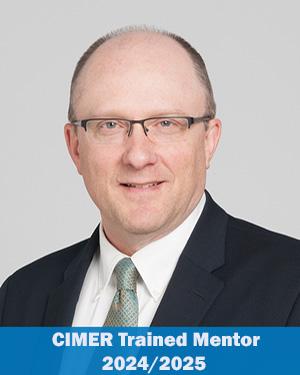Research News
03/11/2021
New Evidence of Microbial Infection That Impairs Healing in Crohn’s Disease
Dr. Stappenbeck and his team found that the yeast D. hansenii, a type of fungus, is elevated in models of Crohn’s disease, particularly concentrated within intestinal wounds, suggesting that targeting this infection may be a viable approach to treat or prevent the disease.

Researchers have characterized a new tissue infection in patients with Crohn’s disease (CD) and preclinical disease models. According to new study results published in Science, the yeast Debaryomyces hansenii—commonly found in foods such as cheese and processed meat—is significantly enriched in areas of intestinal injury in preclinical models and CD patients, a discovery that may point to new treatment or prevention approaches for the common inflammatory bowel disease.
The work was led by Thaddeus Stappenbeck, MD, PhD, chair of Lerner Research Institute’s Department of Inflammation & Immunity. Dr. Stappenbeck joined Cleveland Clinic from Washington University, St. Louis, Missouri, at the end of 2019.
The team found that levels of D. hansenii are elevated in CD patients and models, particularly abundant within chronically inflamed regions of the colon and intestines, indicative of unhealed intestinal wounds.
“It is widely accepted that impaired wound healing can promote chronic inflammation, both of which are key features of inflammatory bowel diseases,” said Dr. Stappenbeck. “The significance our study is that we define a clear mechanistic link between a specific gut microbe and wound healing response.”
Observations from two patient cohorts
The researchers cultured biopsied intestinal tissue from patients with and without Crohn’s disease, finding that D. hansenii was detected in most CD samples compared to only 10 percent of healthy samples.
In an unrelated cohort of patients, researchers sequenced genomic DNA biopsied from various intestinal regions of Crohn’s patients. They found that Debaryomyces was significantly enriched in inflamed regions on the intestines compared to non-inflamed regions sampled from the same patient.
Follow up clinical studies will also be important to test additional cohorts of various ages and geographic locations. It will be important to follow patients with D. hansenii infections over time to determine the clinical importance with respect to disease severity, progression and response to CD treatments.
D. hansenii modulates pro-inflammatory response in preclinical models
To identify the specific mechanisms at play, Dr. Stappenbeck and colleagues studied preclinical models of impaired wound healing consistent with injuries observed in CD patients, finding that D. hansenii levels were significantly higher only within unhealed wounds. They went on to find that the fungus preferentially localized within these wounds to a specific type of immune cell, called macrophages.
D. hansenii is not broadly pro-inflammatory, they determined, but rather contributes to disease pathology by increasing the levels of a specific cytokine called CCL5 (chemokine ligand 5). Chemokines such as CCL5 are needed to recruit other inflammatory cells, though the exact role of CCL5 here is still unclear.
Expression analyses also revealed that genes associated with type 1 interferon, another type of cytokine, were significantly increased in macrophages exposed to D. hansenii. Additional experiments have suggested that type 1 interferons are important to stimulate CCL5 expression which causes D. hansenii-induced disease pathology.
Next steps
“Taken together, our findings suggest that targeting CCL5 may be a viable therapeutic approach to improve intestinal healing in patients with Crohn’s disease that are infected with D. hansenii,” commented Dr. Stappenbeck.
The findings also underscore the need for further studies into the association between diet and Crohn’s disease, as D. hansenii is commonly found in a variety of dairy products, particularly certain cheeses, and processed meats.
“As microbiome research has exploded in the last decade or so, our understanding of its role in human health and disease has expanded tremendously. Our study supports that D. hansenii is safe in healthy individuals, but may be problematic in CD patients. Our goal is to now understand how D. hansenii interacts with components of the microbiome to affect its ability to infect damaged areas of the intestine.”
This research was funded in part by the Crohn’s and Colitis Foundation and the National Institutes of Health. Researchers from Washington University, St. Louis, Missouri; Dartmouth College; and Cedars-Sinai Medical Center, Los Angeles, California, collaborated on the study.
Image: infected macrophage (courtesy of Wasington University)
Featured Experts
News Category
Related News
Research areas
Want To Support Ground-Breaking Research at Cleveland Clinic?
Discover how you can help Cleveland Clinic save lives and continue to lead the transformation of healthcare.
Give to Cleveland Clinic